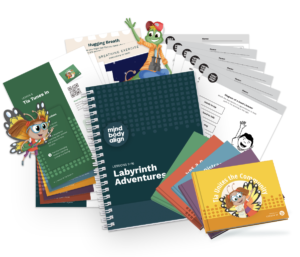5 Things Mindful Teachers Do Differently
Mindful teachers can be found in many classrooms and in many schools around the world. And even though mindfulness has become a very popular and trendy practice from superstars to professional athletes, some of these teachers don’t even know that they are being mindful.
That’s the magic of mindfulness: it has innate human qualities that we all possess. Many of us naturally embody the practice of mindfulness regularly. In order to hone in on those qualities and transfer those to the students in our classroom, we need to know more about the practice of mindfulness. Plus, we must learn how we can sharpen those skills that will allow us to live a happier and healthier life.
With a little knowledge and some practice, mindful teachers do a few things, and these make all the difference in creating positive and healthy learning environments in the classroom and in the school community.
- Mindful teachers pay attention to their own thoughts and emotions. They know that by noticing how emotions work, how it feels in the mind and the body, they are better able to respond to situations, rather than reacting impulsively. These teachers notice stress arising in the body and learn to manage it thoughtfully. They make choices that are healthy, choices that will keep them and their students safe and choices that they will not regret.
- Mindful teachers attend to student emotions and behaviors with more patience, compassion and empathy. Many teachers will agree that discipline is often one of the biggest distractions in the classroom. These distractions can be frustrating for both the teacher and the students in the classroom, so learning to pause and respond thoughtfully will significantly benefit the learning environment by creating a positive and healthy classroom.
- Mindful teachers know that caring for self is as important as caring for others. Teachers are often very selfless and continually put others’ needs before their own. Over time, this can cause dissatisfaction in teachers and cause teachers to “burn out” and leave the profession. Taking the time to practice mindfulness will increase job satisfaction, positivity, and joy.
- Mindful teachers model the practice of mindfulness. They communicate effectively with parents, students, colleagues and school administrators. It’s no secret that students, especially primary age children, will follow the leader and will mimic the behavior that they see from the leader of the class.
- Mindful teachers look for many small ways to practice mindfulness throughout the day. They might pause between classes or during transitions to notice and practice their breathing. They are mindfully listening to the students and building strong and trusting relationships with them. They practice the body scan while waiting for students to answer a question or waiting for them to line up. And they provide many little mindful moments throughout the day to focus and pay attention to what is happening in the present moment.
Following these few simple ideas will help you mitigate some of the effects of stress on the mind and body. Even a little bit of mindfulness in your day is beneficial and builds the habit of adding it to your daily routine. You are just a few breaths away from a calmer and happier you.
Join us at one of our Mindful Educator Workshops or PD courses here. Get more mindful teaching lessons and download one of our free products here.










